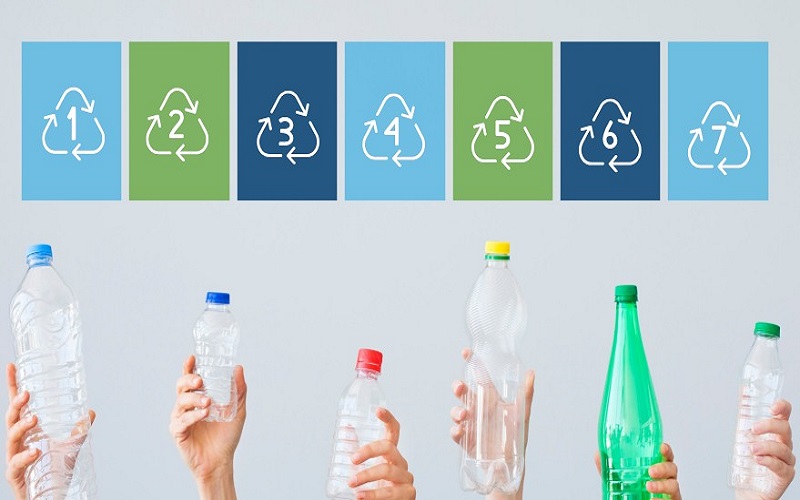In our daily lives, we frequently encounter various plastic products, from takeout containers to beverage bottles, making plastic a significant part of our existence.
However, there’s a commonly overlooked secret hidden at the bottom of these everyday items: a triangular symbol accompanied by numbers and letters.
These symbols are not just simple decorations; they represent different types of plastics and their recycling methods.
This article will delve into the meaning of these symbols of plastics and reveal the environmental standards behind them.
What Is Plastics Symbol?
Plastic symbols, commonly known as recycling symbols or the Resin Identification Coding System (RIC), are a classification system for plastic products.
This system was introduced by the Society of the Plastics Industry (SPI) in 1988, primarily to assist recycling companies and consumers in differentiating between various types of plastics.
The symbols on plastic products consist of identifiers, codes, graphical representations, functional descriptions, and supplementary explanations.
1.Identifier: The abbreviation or code is enclosed between the symbols “>” and “<”. For example, >PP< represents polypropylene polymer.
2.Code: Represented by a number, the standard defines codes for over 100 different types of plastic products.
3.Graphics: Five different types of plastic products such as reusable, recyclable and recycled are represented graphically.
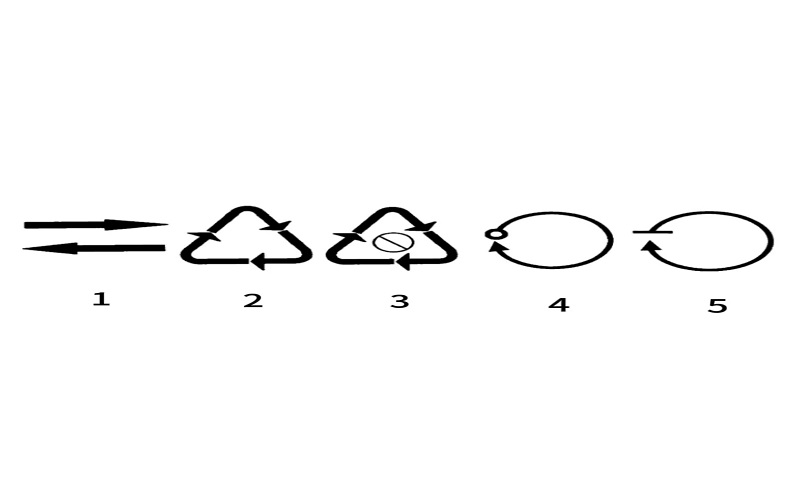
No. 1 indicates that it can be reused;
No. 2 means recyclable;
No. 3 means non-recyclable plastic;
No.4 means recycled plastic;
No. 5 is for recycling and reprocessing plastics.
4.Functional description: such as “biological decomposition”, “antibacterial”, “high barrier”, “corrosion resistance”, “aging resistance” and other functional descriptions.
5.Supplementary instructions: such as “non-food”, “food”, “medical” and other supplementary instructions.
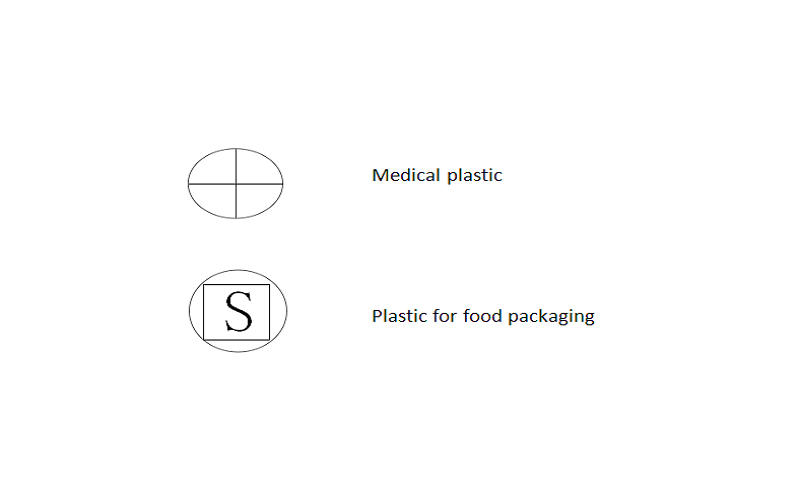
Meaning of Common Plastic Recycle Symbols
The symbol of plastic recycling is a triangular symbol that usually appears on the bottom or side of the plastic container.
The plastic recycling symbol is like the ID card of the plastic container,there are 1 to 7 numbers in the triangle symbol, each number represents a different material.
So the different numbers in the recycling sign indicate what kind of resin the product is made of.
If the product is made of several different materials, the main, basic material of the product is indicated.
Let’s take a look at what each number means:
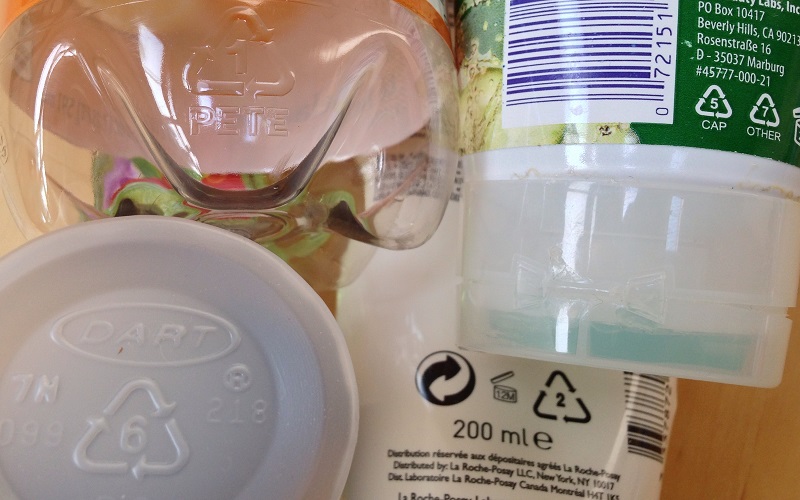
Plastic recycling symbols#1:PET
“01” represents PET (Polyethylene Terephthalate), most commonly used for making mineral water bottles and carbonated drink bottles.
This material is heat resistant up to 70°C and is suitable only for warm or cold drinks, as beverage bottles made from it cannot hold hot water.
When exposed to high temperatures or heated, it can deform and may release harmful plasticizers like Di(2-ethylhexyl) phthalate (DEHP), which are detrimental to human health.
Such plastic bottles should not be stored for long periods or reused extensively.
Scientific research has found that PET plastic products, after being manufactured and either used or stored for more than ten months, can easily release carcinogenic substances, posing significant toxicity to the human body.
Therefore, it is advised to dispose of plastic products with the number 1 code after use and avoid reusing them to prevent health issues.
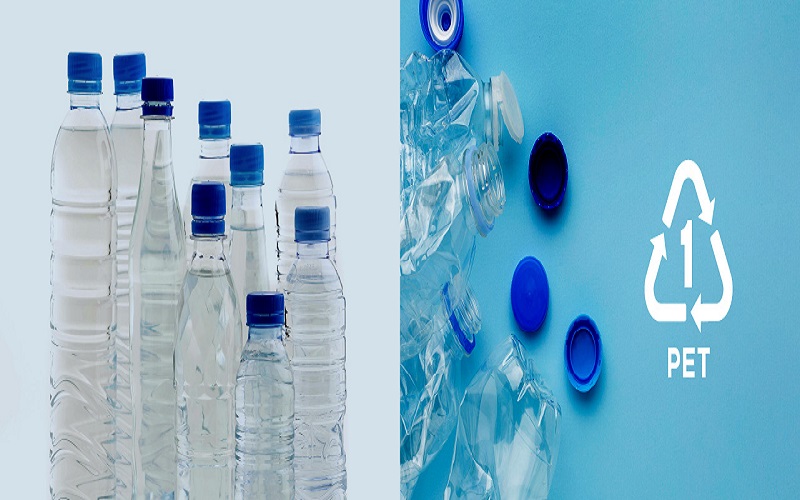
Plastic recycling symbols#2:HDPE
“02” represents HDPE (High-Density Polyethylene), a material commonly used to manufacture plastic containers for cleaning products, bath products, and the ubiquitous plastic bags found in shopping centers.
HDPE plastic can withstand high temperatures ranging from 90 to 110°C and is resistant to corrosion, acids, and alkalis. If marked for food use, it can safely store food items.
Plastic containers that hold cleaning and bath products, made of HDPE, can be reused after careful cleaning.
However, they often retain residues due to difficulty in cleaning, turning them into breeding grounds for bacteria.
Unlike other beverage bottles, the 4-liter Farmer’s Spring bottles are marked with “02” at the bottom.
Although they appear more robust than standard mineral water bottles, it is not recommended to use them as water containers for extended periods, as there is a significant risk of harmful substances being produced over time.
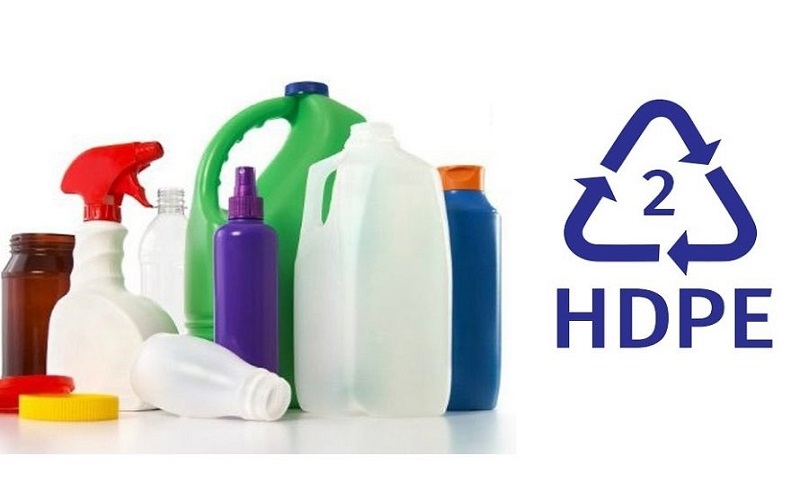
Plastic recycling symbols#3:PVC
03″ stands for PVC (polyvinyl chloride), which is generally used for transparent raincoats, plastic films and other items.
This material does not have strong heat resistance; excessive heat can release two types of harmful substances: unfully polymerized monomer vinyl chloride from the production process and various harmful substances from plasticizers.
These substances can leach out when exposed to high temperatures and fats. If accidentally ingested, they pose a significant risk of causing cancer.
Therefore, PVC injection molding is rarely used in food packaging. If encountered, it is crucial to ensure that it is not subjected to heat.
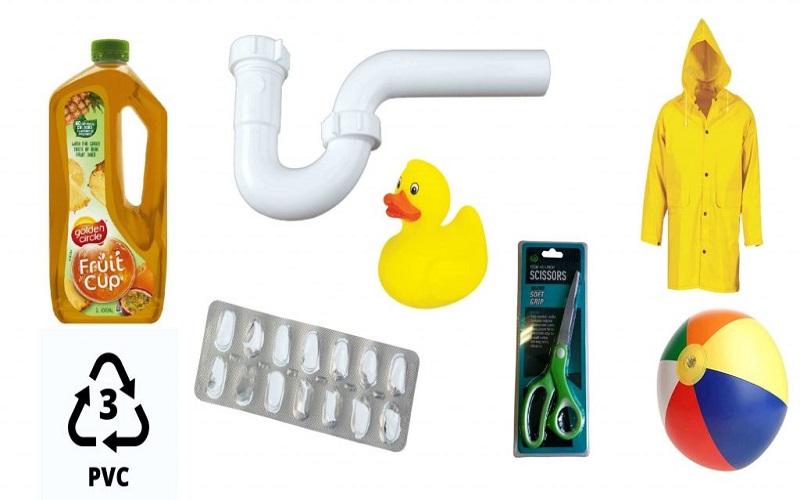
Plastic recycling symbols#4:LDPE
“04” refers to LDPE (Low-Density Polyethylene), the material commonly used to make cling films and plastic wraps that we frequently use in our daily lives.
Qualified PE cling film will undergo a thermal melting process at temperatures exceeding 110°C, leaving behind plastic compounds that the human body cannot decompose.
Moreover, when wrapped around food and heated, the fats in the food can more easily dissolve harmful substances from the cling film.
Therefore, it’s important to remove cling film from food before placing it in a microwave.
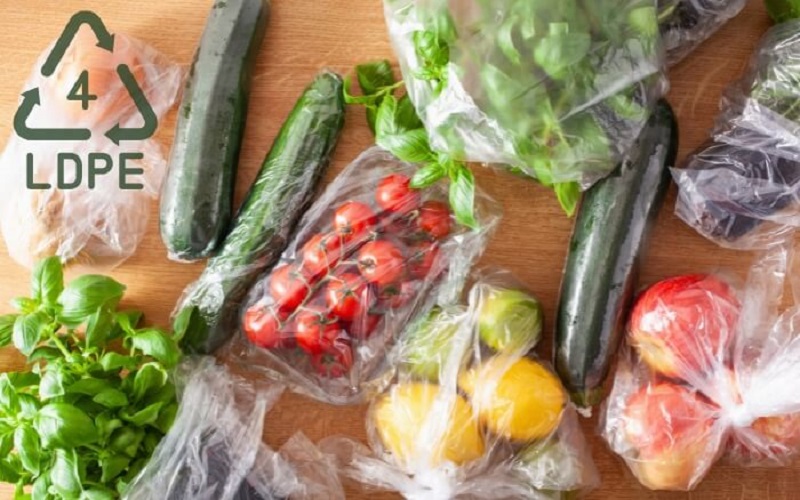
Plastic recycling symbols#5:PP
“05” represents PP (Polypropylene), which is the only material suitable for heating in a microwave oven, making it the preferred material for manufacturing microwave-safe meal boxes.
PP plastic can withstand high temperatures of up to 140°C, with a melting point as high as 167°C.
Its ability to be sterilized with steam and reused after careful cleaning is a notable feature.
PP and PE (Polyethylene) can be considered sibling materials, but PP possesses several physical and mechanical properties that are superior to PE.
Consequently, bottle manufacturers often use PE to make the body of the bottle, while the harder and stronger PP is used for manufacturing bottle caps and handles.
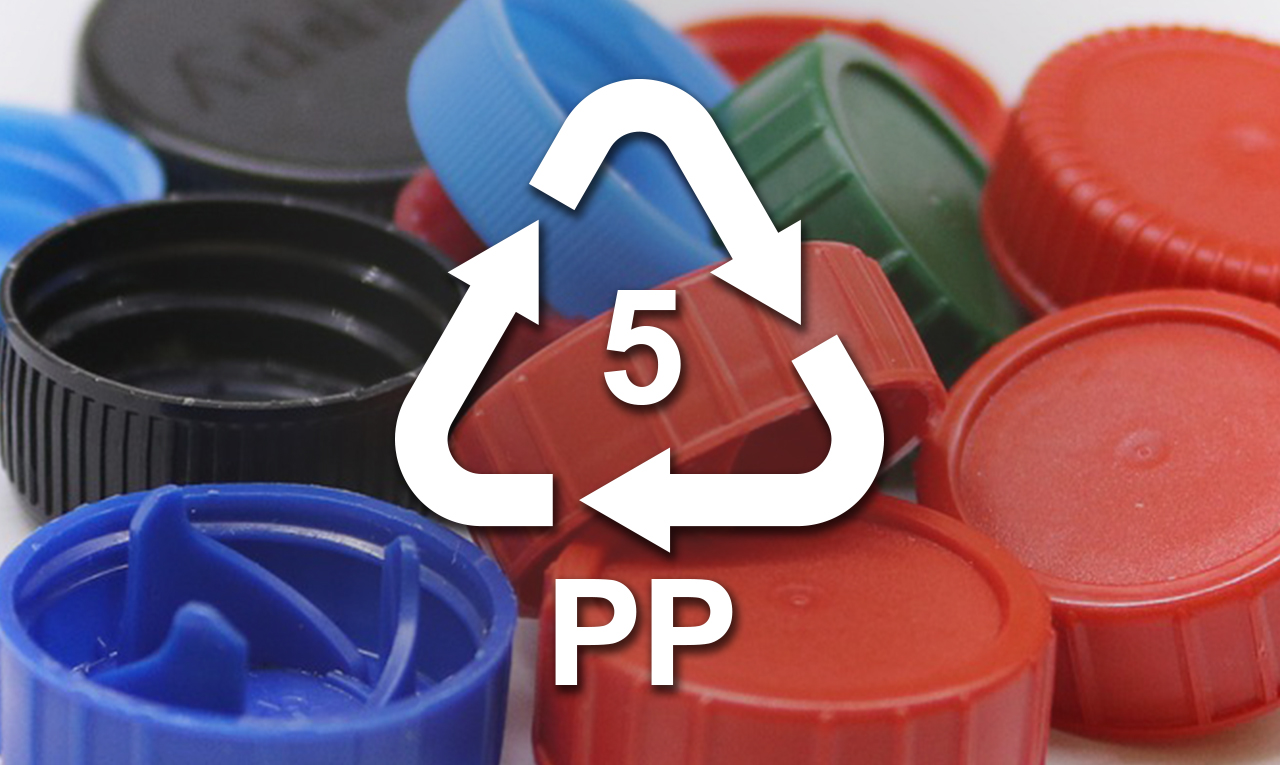
Plastic recycling symbols#6:PS
“06” represents PS (Polystyrene), the material used for making bowl-shaped instant noodle containers and foam fast-food boxes.
It is unsuitable for containing strong acids (such as orange juice), strong alkaline substances, alcohol, or cooking oils, as it can decompose and release styrene, a carcinogenic substance harmful to human health.
Although PS is resistant to both heat and cold, it can release chemicals when subjected to high temperatures.
Therefore, it is crucial to avoid heating bowl-shaped instant noodle containers directly in a microwave oven.
Additionally, PS is difficult to degrade and is a major contributor to “white pollution.”
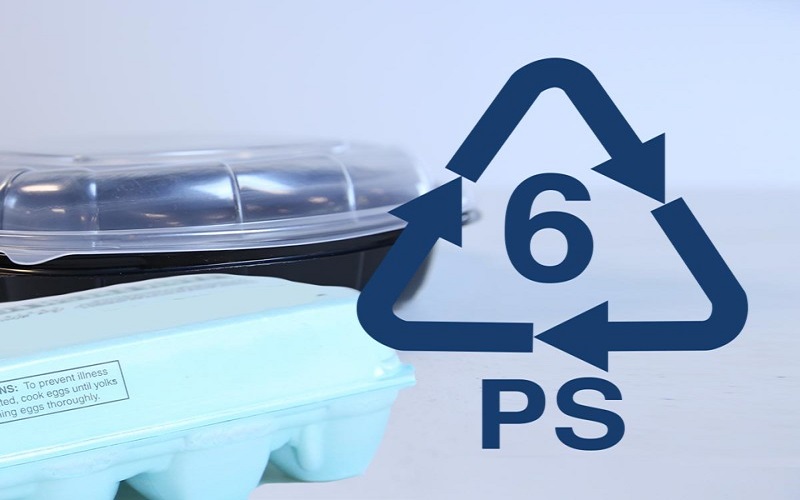
Plastic recycling symbols#7:Other
“07” represents PC (Polycarbonate) and other PC-like materials, including Melamine, ABS, PMMA (Polymethyl Methacrylate, a type of acrylic), Polycarbonate (PC), Polylactic Acid (PLA), Nylon, and glass fiber reinforced plastics.
Among these, PC can withstand temperatures of 120 to 130°C and is not suitable for alkaline substances.
Baby bottles and items like space cups commonly used in daily life are made of PC material, but this material has been controversial due to its Bisphenol A (BPA) content.
Polylactic Acid (PLA) can withstand temperatures up to 50°C, while Acrylic (PMMA) is heat resistant up to 70 to 90°C but is not suitable for alcohol.
Melamine resin can withstand temperatures between 110 and 130°C, but there is a concern about the leaching of methanal (Bisphenol A), so it is not recommended for hot food storage.
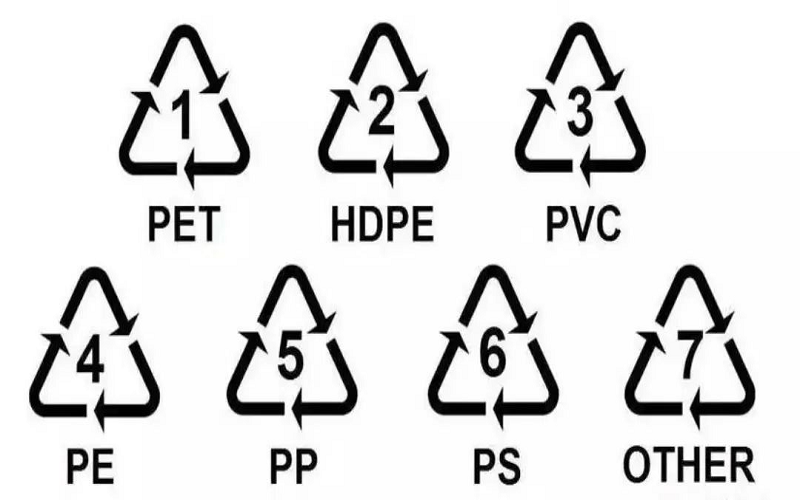
Why It's Important To Understand The Meaning Of Plastic Symbols?
Over the past few decades, while plastics have brought immense convenience to our production and daily lives, the issue of “white pollution” caused by discarded plastics has become increasingly serious.
The introduction of plastic symbols not only helps us use plastic products scientifically but also aids in the sorting and recycling of plastics, effectively controlling and reducing “white pollution.”
Understanding plastic symbols helps in more effectively sorting and recycling plastics, thereby reducing environmental pollution.
Knowing which plastics can be recycled and which cannot helps increase recycling rates and minimize the environmental impact of landfill and incineration.
Different types of plastics vary in their safety when used for heating, storing food, and beverages.
Being aware of their properties helps avoid using inappropriate containers for hot foods or chemicals, thus reducing potential health risks.
For consumers, understanding plastic symbols enables us to make more responsible choices.
For example, opting for products made from recyclable or eco-friendly materials reduces the environmental burden.
Through proper sorting and recycling, plastics can be reused more effectively, reducing the demand for new resources and processing, lowering energy consumption, and decreasing greenhouse gas emissions.
As environmental awareness increases, understanding plastic symbols also represents a commitment to and support for sustainable living.
This contributes to steering society as a whole towards more environmentally friendly and sustainable practices.
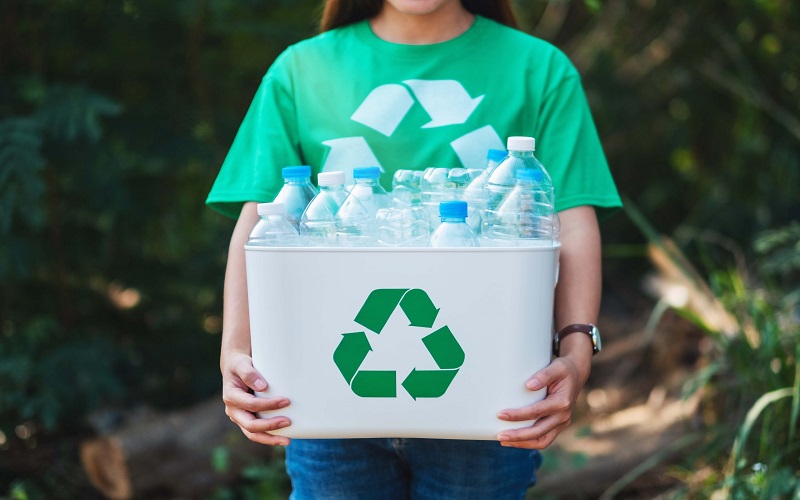
Conclusion
Plastic is an unavoidable material in both everyday life and industrial manufacturing, making it crucial to understand and master the meanings of plastic identification symbols.
When using plastics, number 1 plastic is generally safe, but be careful not to expose it to high temperatures or reuse it repeatedly
Numbers 2, 4, and 5 plastics are usually considered safe, but even if marked as “microwave-safe,” it’s better not to heat them in the microwave.
When heating food or beverages in a microwave, avoid using any plastic products to contain and cover the food.
Special caution is needed when using numbers 3, 6, and 7 plastics, especially for storing food and beverages, and it’s wise to be selective.
Also, avoid plastics number 3 and 6 for children’s toys.
Another key point is about the recycling of plastic products.
By following the plastic symbols for sorting, we can not only ensure that plastics are properly processed but also minimize the negative impact on the environment.
